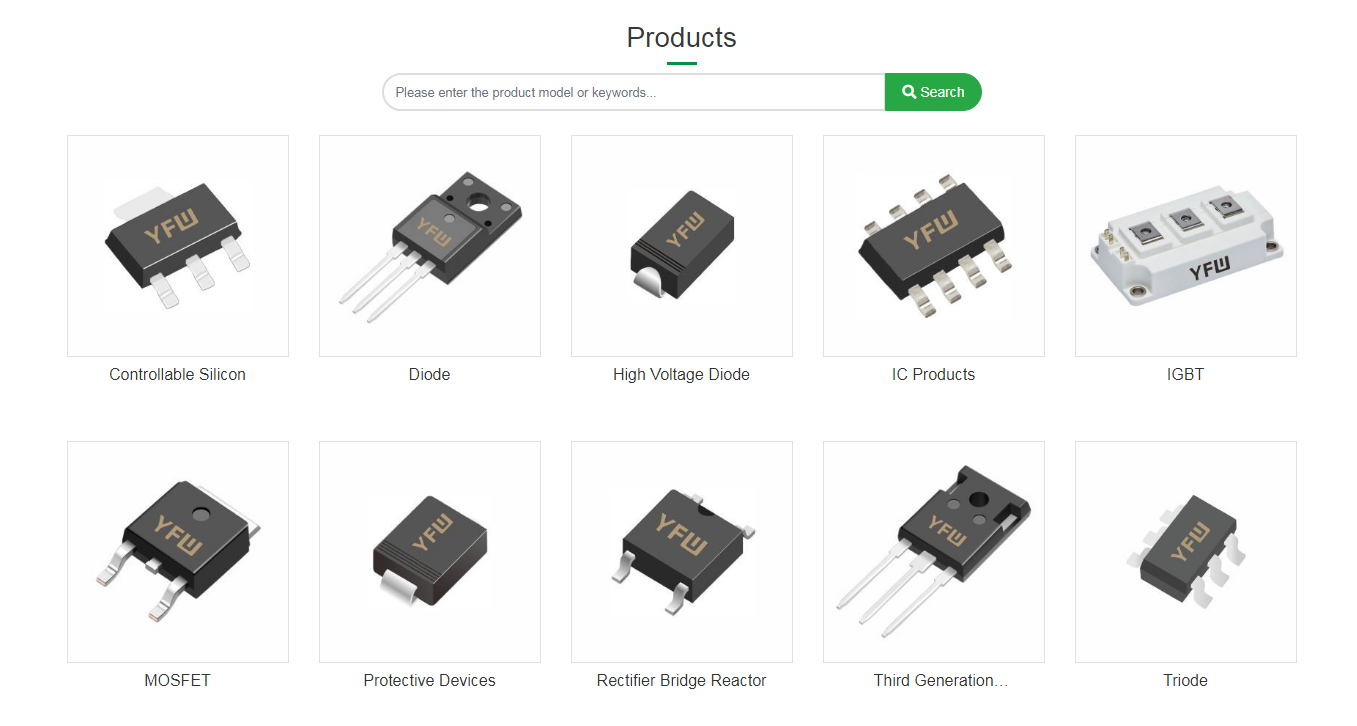Date:2025-03-18 Categories:Industry News Hits:912 From:Guangdong Youfeng Microelectronics Co., Ltd(YFW)
Choosing the right diode model a highly technical process that involves a deep understanding of how diodes work, the different types of diodes, and their applications in circuits. Here are several key factors to consider when a diode: 1. Maximum Forward Current (IF): This is the maximum current value that a diode can continuously pass through. When selecting a model, ensure that the current in the circuit will not exceed this value. 2. Peak Reverse Voltage (PRV or VRM): The maximum voltage a diode can withstand when reverse biased It should be higher than the maximum reverse voltage that may occur in the circuit. 3. Forward Voltage Drop (VF): When the diode is conducting, a voltage occurs across it, and a suitable forward voltage drop value needs to be selected based on the voltage and power loss requirements of the application. 4. Switching Speed: The speed of a diode from conducting to non-conducting is critical for high-frequency applications or switch-mode power supplies, etc. 5. Operating Temperature: Diod perform differently at different operating temperatures, and a suitable operating temperature range should be chosen based on the actual usage environment. 6. Package Type: Select the appropriate package type based on assembly method and space constraints on the circuit board. 7. Special Functions: If special functions are required (e.g., voltage regulation, fast recovery, Schottky TVS, etc.), then a specific type of diode with these features should be chosen. Next, let's discuss some common types of diodes and their: Rectifier Diodes: Used to convert AC to DC. In addition to the above parameters, the working frequency should also be considered when choosing. Schottkyiodes: With low forward voltage drop and fast switching characteristics, they are suitable for high-efficiency power supplies and high-frequency applications. Zener Diodes: Used provide a stable reference voltage. The stable voltage value and power dissipation capability should be considered during selection. TVS Diodes (Transient Voltage Suppressors): Used protect circuits from transient voltage spikes. Important parameters include peak pulse power, transient voltage, and leakage current, etc. LEDs (Light-Emitting Diodes): In to current and voltage, the light output, color, and packaging should also be considered during selection. Optocouplers: Contain a light-emitting diode a photodetector component. During selection, consider the isolation voltage, conversion efficiency, and response speed. RF Diodes: Used for RF and microwave applications, and frequency range, insertion loss, and power capacity should be considered during selection. Finally, it's worth reminding that each application has different requirements, so it's also necessary consider the entire circuit design when choosing a diode. It is recommended to refer to the diode's data sheets during the design phase, communicate with manufacturers, and perform tests the actual circuit to ensure the accuracy of the selection. In addition, the supply situation in the market, as well as commercial factors such as cost and delivery time, should also be.

Previous:STMicroelectronics has unveiled a new series of 100V Trench Schottkyifier diodes
Next:NZT560A 1A 80V SOT-223 Marked NZT560A Small Signal Transistor Y Micro Brand